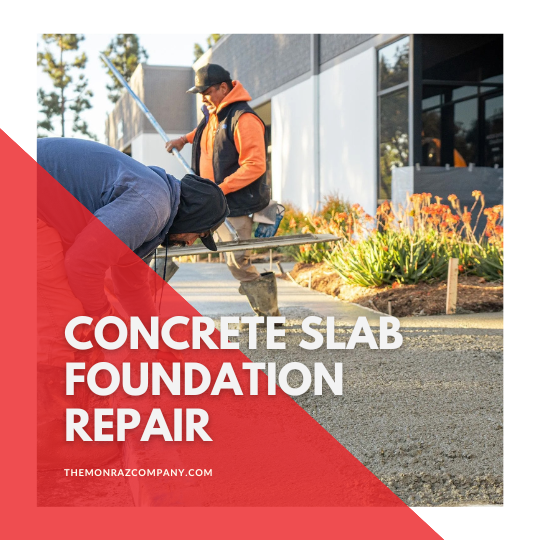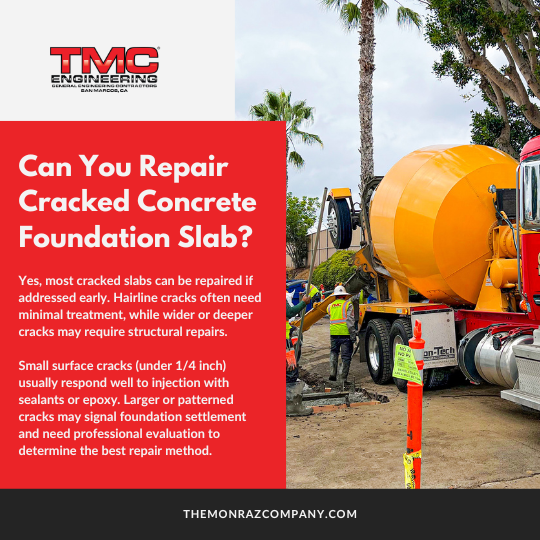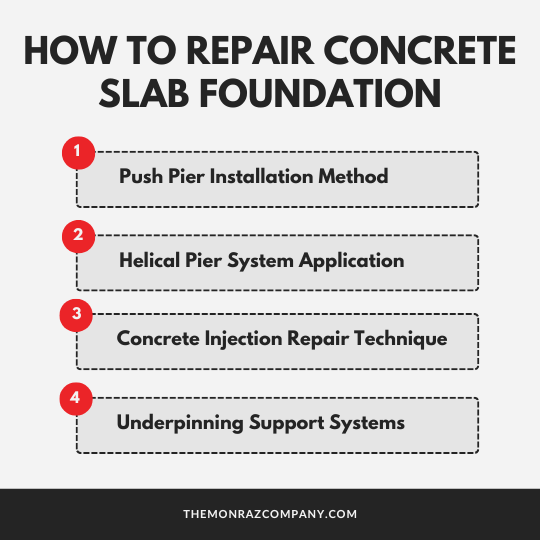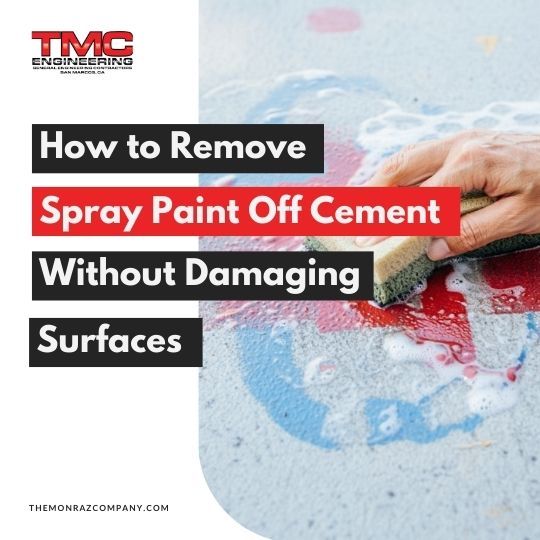Concrete Slab Foundation Repair: Understanding Your Options
Concrete slabs serve as foundational elements for numerous commercial buildings throughout California. Yet, foundation problems frequently emerge due to shifting soil conditions, seismic events, and changing environmental factors. When concrete slab foundation issues develop, property owners often notice wall cracks spreading across interior spaces, windows refusing to close properly, and doors sticking or gapping irregularly.
Ignoring these warning indicators proves costly in the long run. Foundation settlement and foundational cracking tend to worsen rapidly, potentially compromising entire structures and substantially diminishing property values. Therefore, addressing foundation issues immediately is necessary to prevent extensive damage and preserve the building’s safety and functionality.
This post will examine concrete slab foundation repair techniques, associated expenses, and practical solutions designed for California's challenging geological environment.
If you’d like a quicker or more specific answer to your repairs and construction questions, call the experts at
TMC Engineering! If you’re in Southern California, we can help educate you on your problem and perform whatever repair is necessary. We’ve got an expert solution for your concrete or asphalt concern!

Concrete Slab Foundation Repair: What to Expect
If you need guidance on concrete slab foundation repair, look no further. Here, you will find comprehensive information on repair procedures and why they’re essential for commercial structures. We will also explain how to recognize various foundation damage types, comprehend different repair methodologies, and make informed decisions about structural maintenance needs.
California's unpredictable soil composition, combined with frequent seismic activity, creates distinct obstacles for commercial foundations. Therefore, mastering appropriate repair techniques becomes vital for property owners who want to maintain secure and operational buildings. Furthermore, this knowledge enables effective contractor communication and ensures superior work quality.
These insights focus on practical solutions that address genuine foundation problems commonly encountered in commercial settings. In addition, property owners will gain a clearer understanding of cost factors and expected project timelines for the different repair approaches.

Can You Repair Cracked Concrete Foundation Slab?
Most cracked concrete foundation slabs respond favorably to professional repair when specialists address them promptly. The success of such repairs depends on the severity of the crack, the location of the damage, and the cause behind it. Hairline cracks typically need minimal treatment, while broader structural cracks require extensive interventions.
Surface cracks usually respond positively to injection techniques that utilize specialized sealants or epoxy materials. These solutions work effectively for cracks measuring under one-quarter inch wide. However, larger cracks generally signal deeper foundation settlement requiring structural repairs.
Available repair options vary based on crack distribution and patterns throughout the affected slab. Scattered hairline cracks might indicate normal building settlement, whereas systematic crack formations typically reveal serious foundation problems that demand professional evaluation and targeted interventions.

How To Repair Concrete Slab Foundation
Established methods address various types of foundation damage, and each technique suits specific conditions and severity levels. These approaches represent proven industry standards that have been successfully applied across California’s commercial property sector.
Push Pier Installation Method
Push piers deliver outstanding results for foundation settlement and structural integrity problems. This approach involves driving steel piers deep into stable soil formations beneath existing foundations until they reach an adequate load-bearing capacity. The number of piers depends on building dimensions, weight distribution patterns, and existing soil conditions.
Installation starts with excavating around damaged foundation sections to expose the footings completely. Then, technicians should position hydraulic machinery and drive piers through unstable soil until contacting bedrock or compact soil layers. After installation, these piers redirect building weight to stable ground, effectively halting additional settlement.
Push piers excel in supporting commercial structures that experience continuous foundation movement. They deliver permanent stability and can raise settled sections toward their original elevations. Nevertheless, this method demands substantial excavation and typically falls within higher
slab foundation repair cost ranges.
Helical Pier System Application
Helical piers offer robust alternatives for foundation stabilization, proving particularly effective in California’s diverse soil environments. These spiral-shaped piers feature helical plates anchoring into stable soil formations, delivering exceptional holding strength for commercial buildings.
To install helical piers, technicians must use specialized machinery to screw them into the ground until predetermined torque specifications are achieved. This process ensures a sufficient load-bearing capacity without requiring heavy driving forces typically needed for push pier systems. As a result, helical pier installation produces reduced vibration and noise levels, making it appropriate for occupied structures.
These piers excel in locations with restricted access or where minimal excavation is preferred. Additionally, helical piers function effectively in both compression and tension situations, providing flexibility for diverse foundation repair scenarios. This method proves particularly suitable for lighter commercial buildings and structural additions.
Concrete Injection Repair Technique
Concrete injection repairs cracked slabs by injecting specialized materials under pressure to seal and strengthen the damaged areas. This method works optimally for smaller cracks and areas where structural stability remains sound, but water penetration or minor settlement has occurred.
This procedure begins with thoroughly cleaning the crack surfaces. Then, high-strength
polyurethane or epoxy compounds are injected to penetrate deeply into the damaged areas, creating waterproof seals and restoring structural continuity. Many California contractors favor this approach for its rapid completion and minimal disruption to business operations.
Injection repairs prove most successful for foundation problems that haven't advanced to major structural concerns. However, this technique requires careful evaluation to confirm that underlying settlement causes have been resolved. Otherwise, additional cracks may appear as foundation movement persists.
Underpinning Support Systems
Underpinning involves extending current foundations to deeper, more stable soil formations. This comprehensive strategy addresses severe foundation damage where alternative methods might prove inadequate for lasting stability.
The process typically requires excavating beneath existing foundations in strategically planned segments. Workers then pour new concrete footings at increased depths or install additional support frameworks connected to the original foundations. This method demands extensive planning and often temporary structural support during construction phases.
Underpinning works effectively for major foundation settlement or when soil conditions beneath current foundations prove insufficient for building loads. Commercial properties with basement areas or crawl spaces often benefit from this strategy, although the costs typically exceed those of other repair methods considerably.
Tips for Professional Concrete Slab Foundation Repair Services
California's seismic regulations and building standards require the services of experienced professionals for foundation repair projects. Seek contractors with specific commercial foundation expertise, appropriate licensing, and familiarity with local geological characteristics.
Quality contractors deliver thorough assessments before suggesting repair methods, and there’s no team better to get this done if you’re in Southern California than
TMC Engineering. We would explain why particular techniques are suitable for your specific situation and provide realistic completion schedules. Additionally, reputable companies offer work warranties and maintain adequate insurance coverage.
When reviewing repair proposals, consider the long-term effectiveness rather than initial expenses alone. A well-informed approach to fixing your slab foundation problems reduces costs over time while ensuring buildings remain safe and functional.
Proper foundation repair demands appropriate tools for concrete work, guaranteeing precision and durability throughout the repair process. Professional contractors invest in quality equipment, producing lasting results for commercial properties. Check out our posts on
tools for concrete to see some of the tools and how they are to be used.
Understanding slab foundation repair methods helps property owners make educated decisions regarding structural maintenance requirements.
Different types of foundations require specific repair strategies, making professional assessment essential for successful outcomes. Foundation piers, injection techniques, and underpinning methods each serve distinct functions in addressing foundation damage and ensuring long-term stability for commercial structures.
Here at
TMC Engineering, we have a deep commitment to delivering projects characterized by the highest
standards for safety, workmanship, and client satisfaction. We aim to provide you with valuable content and insights related to the
services our
team of experts provides! Whether you require
asphalt paving,
striping, sealing, or
concrete work, we offer a full suite of transportation construction solutions. Look no further; we’ve got all you need and more!
Contact us today to discuss your needs and receive a customized proposal. We’re committed to building lasting partnerships by delivering quality-driven solutions.




